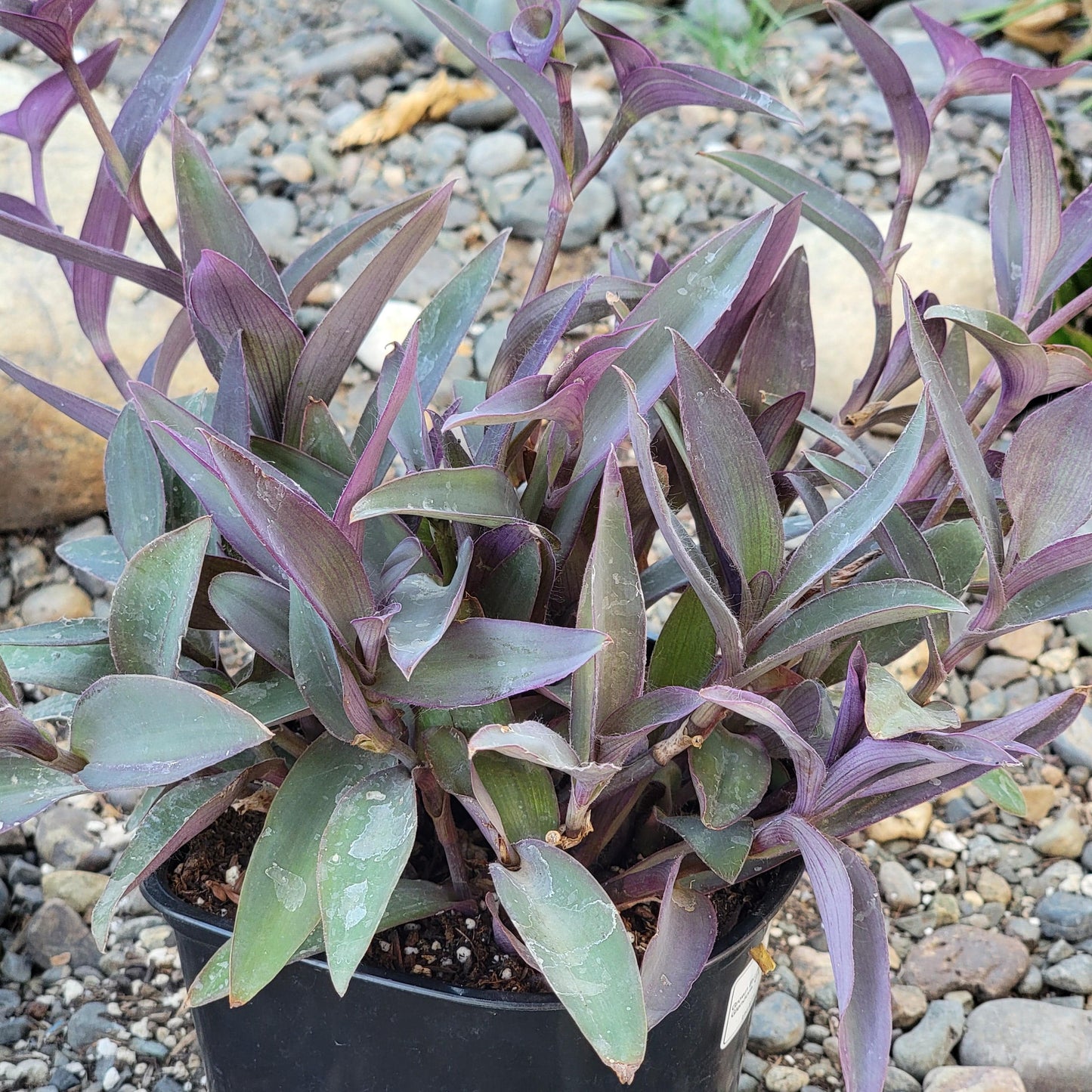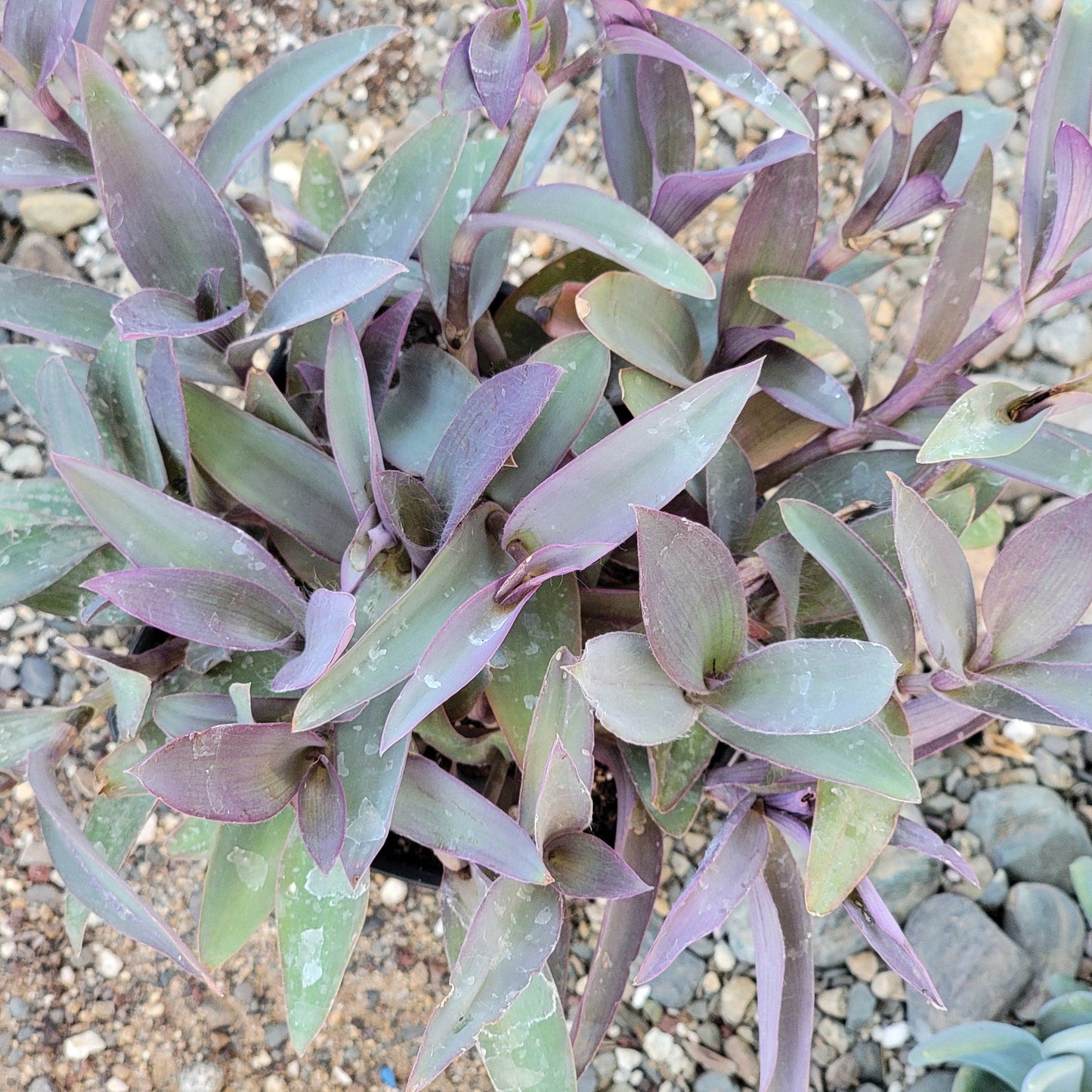Tradescantia pallida 'Purpurea' Wandering Jew
Tradescantia pallida 'Purpurea' Wandering Jew
Tradescantia pallida 'Purpurea', also known as Purple Spiderwort or Purple Heart, is a versatile and easy to grow plant with vibrant, purple leaves. Its leaves are lance-shaped and can reach up to 5.0" in length, with fine cilia. The stems can grow up to 18.0" long, making it an excellent trailing plant or creeping ground cover. To maintain its intense purple coloration, it requires bright sunlight, which creates a striking contrast when paired with green plants in containers. This hardy plant can withstand temperatures down to 10F (Zone 8) and will die back above-ground in the winter, only to re-sprout each spring. It also thrives as an indoor plant. This variety produces simple, yet sweet blooms with three pale purple petals.
Please Note: The juices in the stems can mildly irritate skin, so it's important to keep this plant out of reach of children and animals.
Please Note: Plant will ship bare root with little to no dirt, and you will receive a plant similar to the one in the photo. Fragile: leaves may curl, fall off, or bruise during shipping. Will recover with proper light, water, and leaf shedding.
Returns & exchanges: Not accepted
Please contact us if you have any issues with your order
Share



